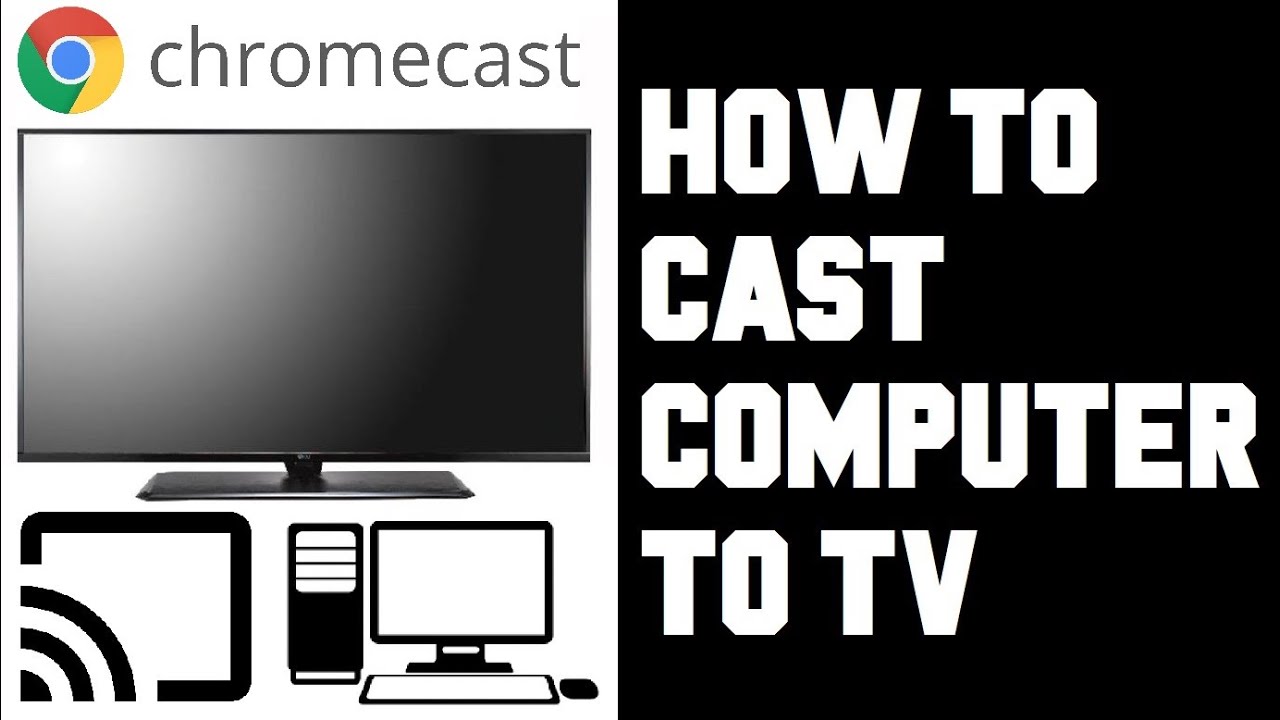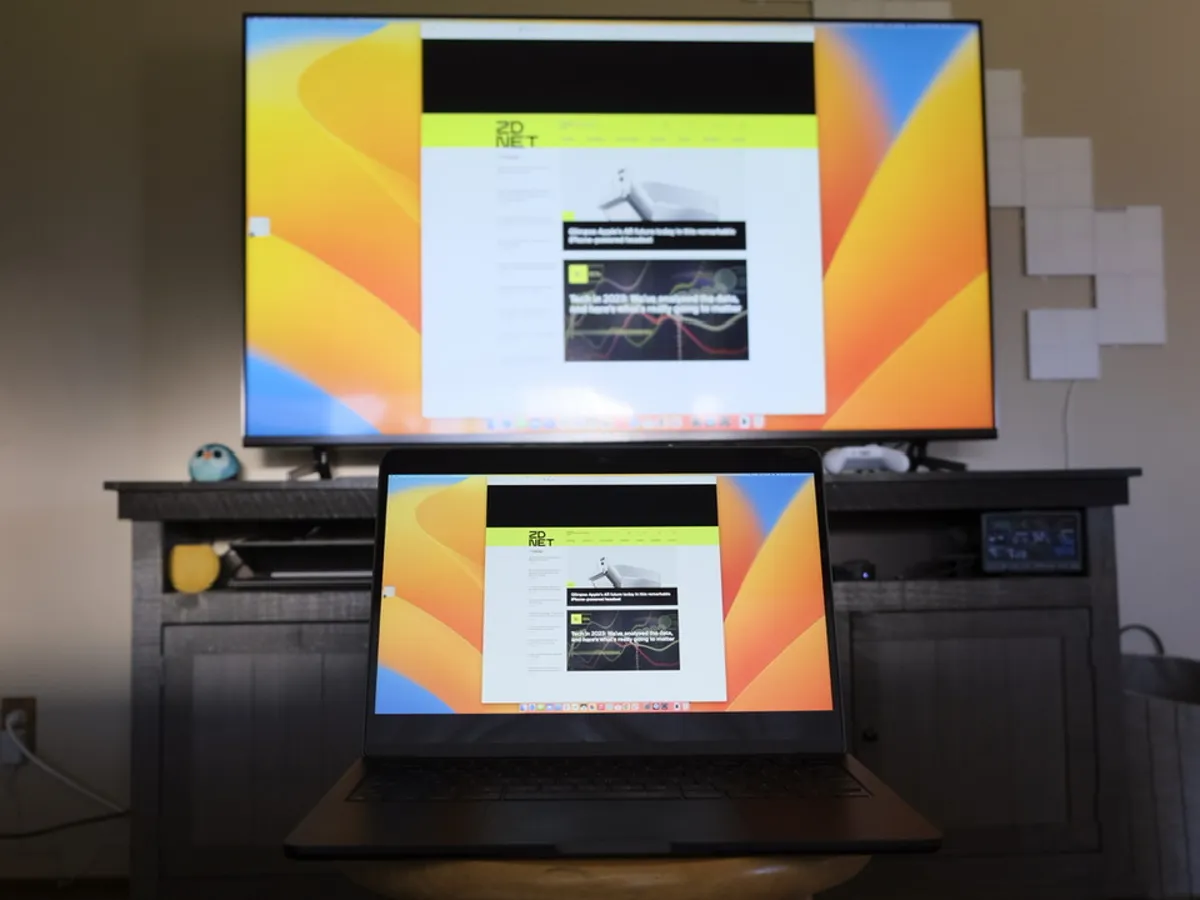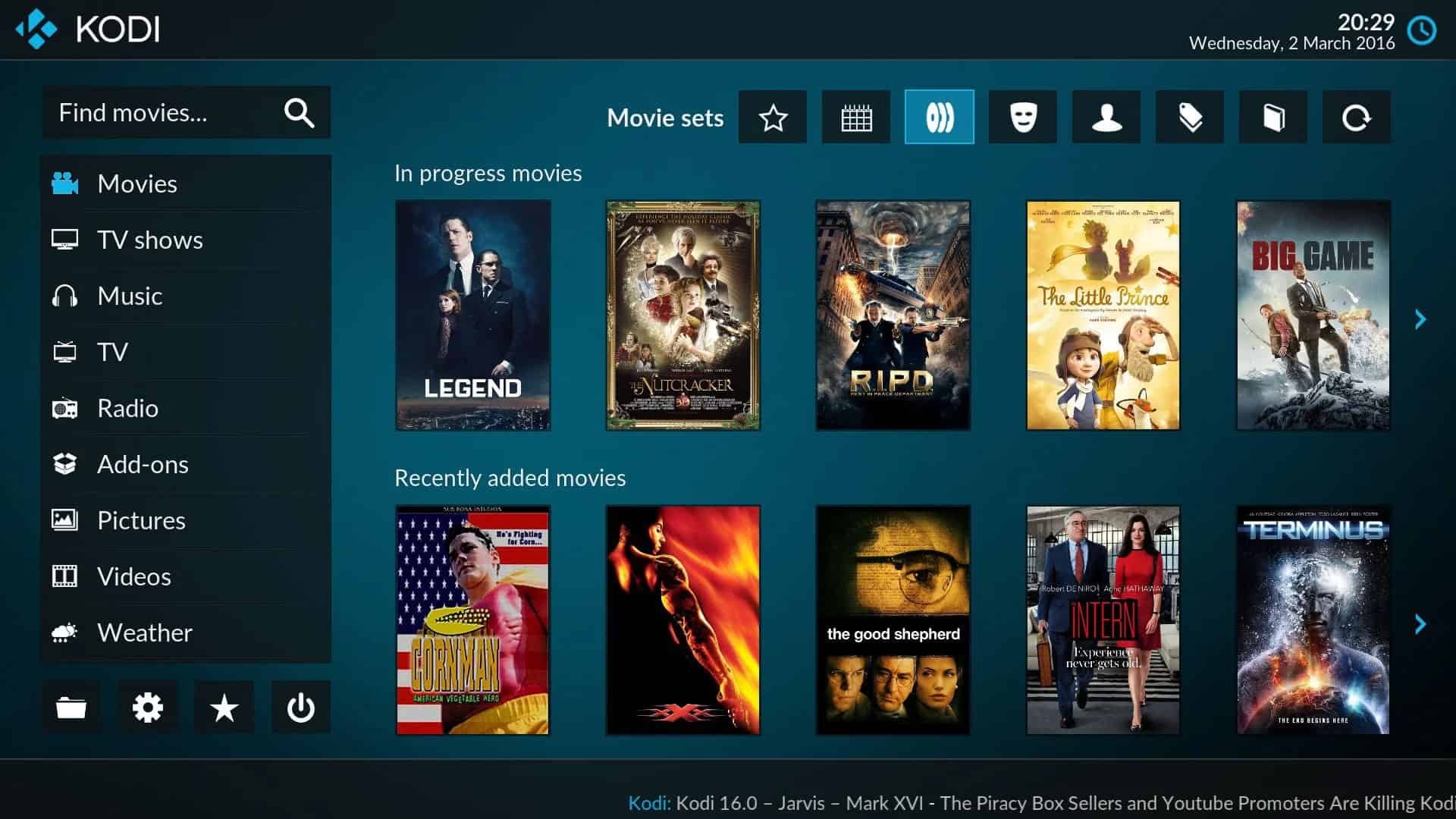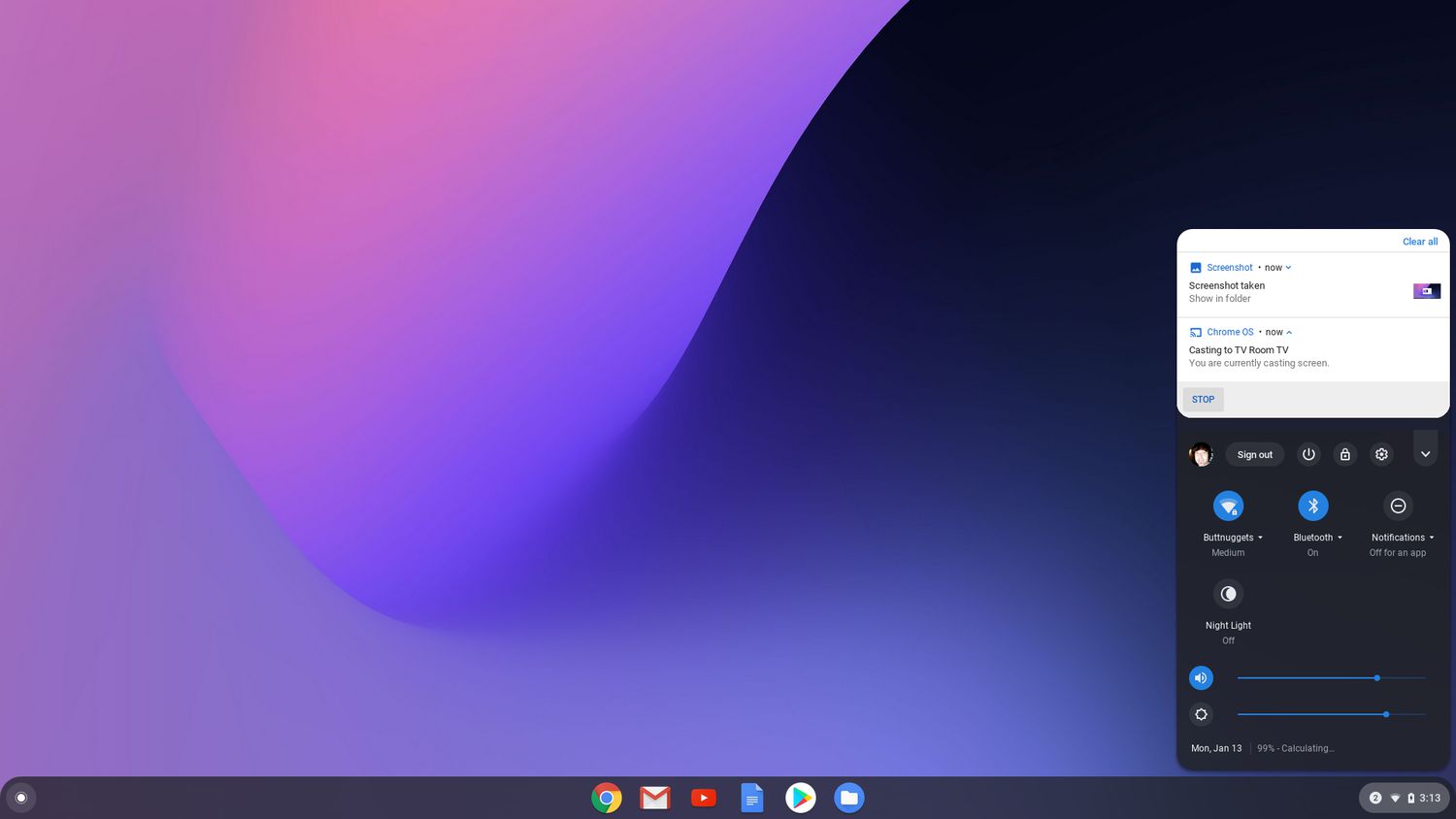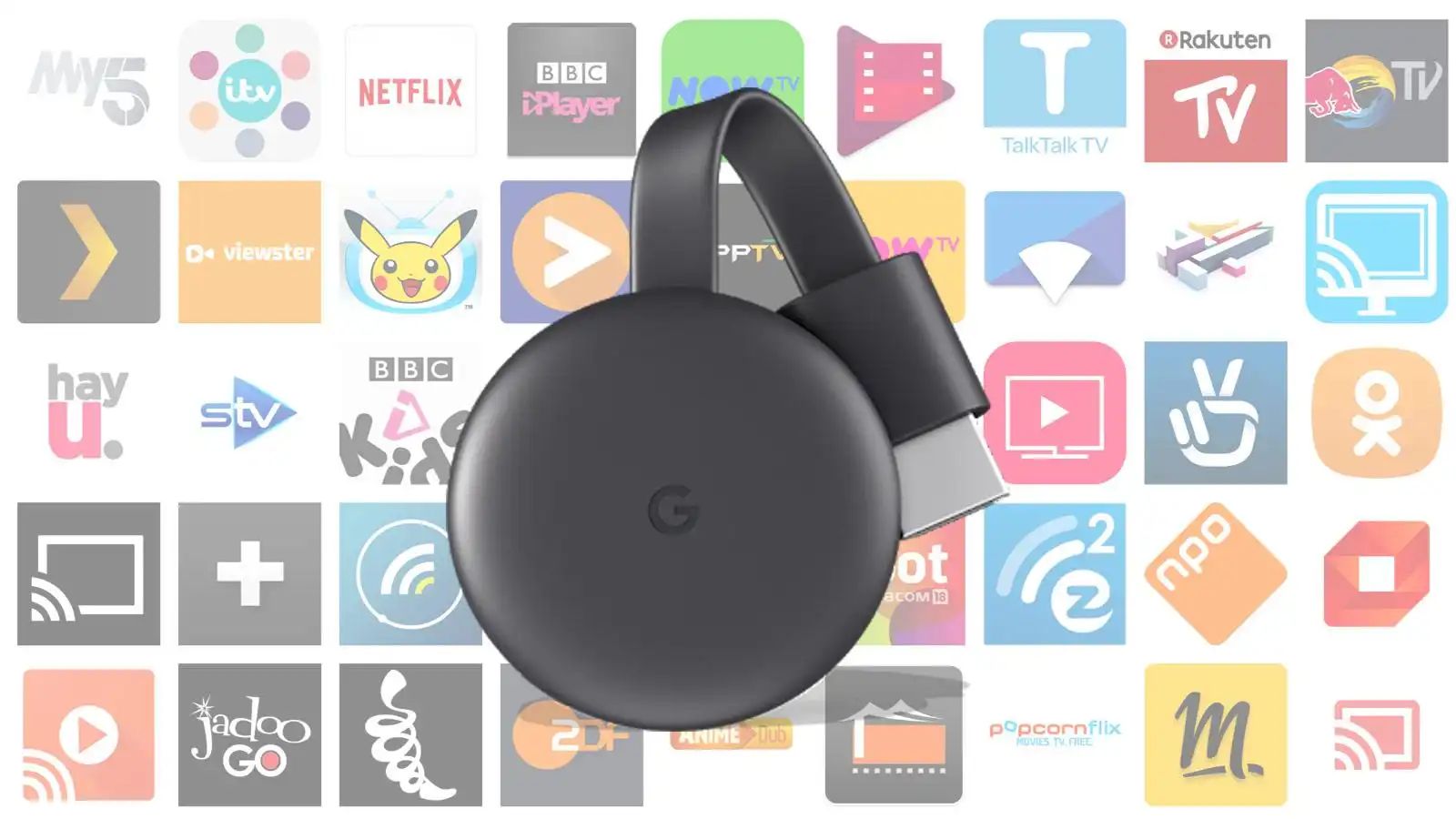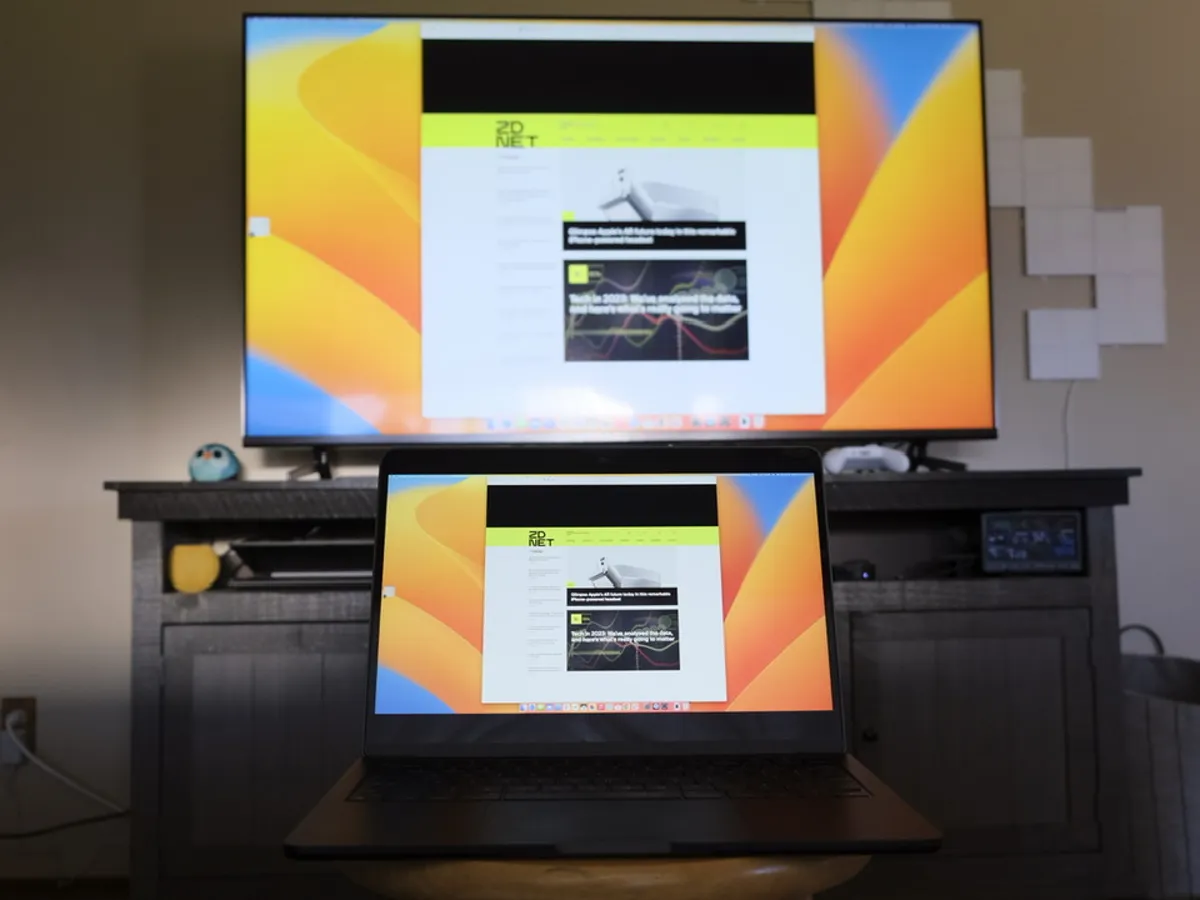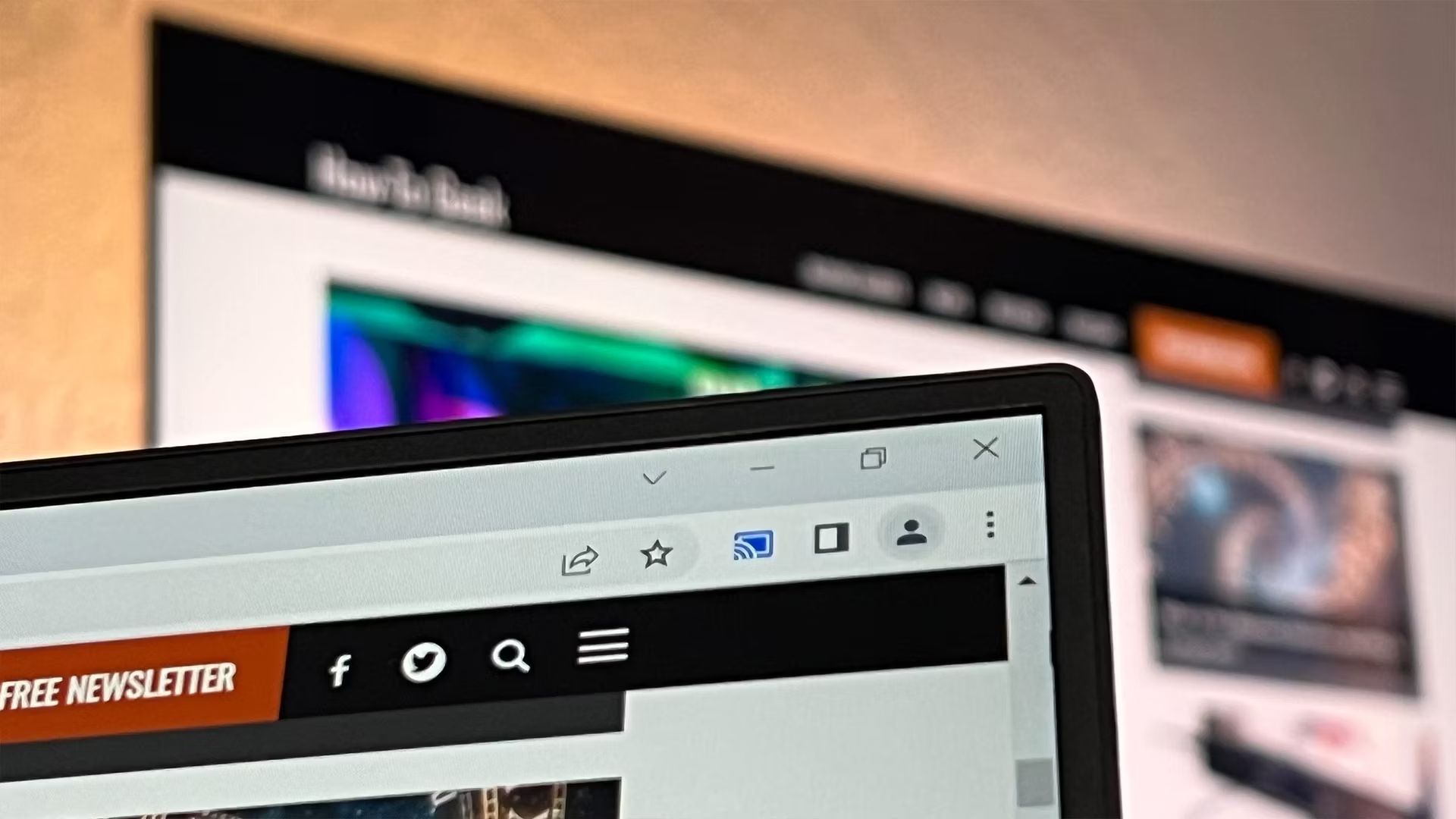Introduction
Streaming has become an integral part of our entertainment experience, allowing us to access a wide range of content directly on our devices. While there are numerous streaming options available, Chromecast stands out as a versatile and user-friendly device that enables you to cast your desktop to a smart TV effortlessly. Whether you want to watch your favorite videos on a bigger screen, share presentations, or even play games, Chromecast offers a seamless way to mirror your desktop onto your TV.
Chromecast, developed by Google, is a small dongle that plugs into the HDMI port of your smart TV. It allows you to wirelessly stream content from your devices such as smartphones, tablets, and computers to your TV screen. This innovative technology eliminates the need for cumbersome cables and provides a convenient way to enjoy your favorite media on a larger display.
Setting up Chromecast is a straightforward process. After connecting it to your smart TV, you can easily configure it using the Google Home app on your mobile device. Once set up, you can cast content from various applications, including popular streaming platforms like Netflix, YouTube, and Spotify, as well as mirror your desktop screen to make presentations, browse the web, or enjoy multimedia content.
In this guide, we’ll walk you through the step-by-step process of setting up your Chromecast and connecting it to your smart TV. We’ll also explore different methods of casting your desktop to the TV, providing you with a seamless streaming experience. So, let’s dive in and discover how you can cast your desktop to a smart TV using Chromecast!
What is Chromecast?
Chromecast is a streaming media device developed by Google that allows you to cast content from your devices, such as smartphones, tablets, and computers, to your smart TV. It provides a simple and convenient way to enjoy your favorite media on a larger screen without the need for cables or external devices.
The Chromecast device itself is a small dongle that connects to the HDMI port on your TV. Its compact size and sleek design make it easy to plug and play, blending seamlessly with your entertainment setup. Once connected, you can control Chromecast using your smartphone or computer, enabling you to cast a wide variety of content directly onto your TV screen.
One of the key features of Chromecast is its compatibility with numerous streaming applications. You can cast content from popular platforms such as Netflix, YouTube, Disney+, Hulu, and more, providing you with a vast library of movies, TV shows, and videos to enjoy on the big screen.
What makes Chromecast unique is its ability to mirror your desktop screen. By casting your desktop, you can share presentations, browse the web, or even play games on your TV. This feature is particularly useful for business meetings, educational purposes, or simply for enjoying your favorite online content on a larger display.
Chromecast also offers multi-room audio support, allowing you to synchronize audio playback across multiple Chromecast devices in different rooms. This enables you to create a seamless audio experience throughout your home, perfect for parties or immersive music sessions.
In terms of setup, Chromecast is user-friendly and accessible to anyone, regardless of technical expertise. The initial setup involves connecting the Chromecast device to your TV and configuring the settings using the Google Home app on your mobile device or computer. Once set up, you can easily cast content using compatible applications or by mirroring your desktop screen.
Overall, Chromecast is a versatile and convenient streaming device that enhances your entertainment experience. It enables you to cast content from your devices, stream popular media platforms, and mirror your desktop screen, all in a seamless and efficient manner. Whether you’re enjoying a movie night, making a presentation, or listening to music, Chromecast adds a new dimension to your smart TV and opens up a world of entertainment possibilities.
Setting Up Chromecast
Setting up Chromecast is a straightforward process that can be done in a few simple steps. Before you begin, make sure you have the following:
- A Chromecast device
- A compatible smart TV with an available HDMI port
- A stable Wi-Fi network
- A mobile device or computer with the Google Home app or Chrome browser
Once you have everything ready, follow these steps to set up your Chromecast:
- Plug the Chromecast device into the HDMI port of your smart TV. Make sure the device is securely connected.
- Turn on your smart TV and switch to the appropriate HDMI input where the Chromecast is connected.
- On your mobile device or computer, download and install the Google Home app from the App Store or Google Play Store. If you’re using a computer, make sure you have the Google Chrome browser installed.
- Open the Google Home app or Chrome browser and sign in with your Google account. If you don’t have a Google account, you’ll need to create one.
- Follow the on-screen instructions to set up your Chromecast. The app or browser will automatically detect the Chromecast device and guide you through the setup process.
- During the setup, you’ll need to connect your Chromecast to your Wi-Fi network. Make sure you have the correct network credentials handy.
- Once connected, you can customize the settings for your Chromecast, such as choosing the device name and enabling guest mode.
After completing the setup, you can start enjoying the features of Chromecast. You can cast content from compatible applications by tapping the cast icon and selecting your Chromecast device. Additionally, you can mirror your desktop screen by opening the Google Home app or Chrome browser and selecting the “Cast Screen” option.
It’s important to note that different Chromecast models may have slightly different setup instructions. Make sure to refer to the specific instructions provided by Google or check the Chromecast support website for more detailed guidance.
Setting up Chromecast is quick and easy, allowing you to start streaming your favorite content in no time. Whether you want to watch movies, share presentations, or play games on the big screen, Chromecast provides a seamless and enjoyable streaming experience.
Setting Up Your Smart TV
Before you can fully utilize the capabilities of Chromecast, it’s important to ensure that your smart TV is properly set up. While the exact steps may vary depending on your TV model and brand, here are some general guidelines to help you get started:
- Unbox and assemble your smart TV according to the manufacturer’s instructions. Make sure to place it in an appropriate location and connect it to a power source.
- Connect your smart TV to your home network. Most smart TVs offer both wired and wireless connection options. If you prefer a wired connection, use an Ethernet cable to connect your TV to your modem or router. For a wireless connection, access the TV’s network settings and follow the prompts to connect to your Wi-Fi network.
- Once connected to the network, your smart TV may prompt you to perform a software update. It’s recommended to proceed with the update to ensure your TV has the latest features and bug fixes.
- Next, familiarize yourself with the on-screen user interface of your smart TV. This may involve configuring settings such as language preferences, time zone, display options, and audio settings.
- Some smart TVs may require you to create or sign in to an account associated with the manufacturer or a specific app store. Follow the instructions provided to complete the account setup process.
- Install and configure the necessary streaming applications on your smart TV. This can include popular platforms like Netflix, YouTube, Hulu, and more. Access the TV’s app store, search for the desired applications, and follow the prompts to download and sign in to each app. This will ensure that you have access to a wide range of content to cast using Chromecast.
- Finally, test the functionality of your smart TV by launching the installed streaming applications and verifying that you can successfully stream content. This will help ensure that your TV is ready to receive and display content cast from your devices.
It’s important to consult your TV’s user manual or the manufacturer’s support documentation for specific instructions tailored to your TV model. These resources will provide detailed guidance on setting up and navigating your smart TV’s features and settings.
Once your smart TV is properly set up, you can proceed to connect your Chromecast device and start enjoying the benefits of casting your desktop and streaming content directly to your TV with ease.
Connecting Your Desktop to Chromecast
Once you have set up your Chromecast device and smart TV, you can connect your desktop to Chromecast and start casting your screen. There are several methods you can use to achieve this, depending on your operating system and preferences. Here, we’ll explore two common methods: casting from the Chrome browser and casting from desktop apps.
To cast from the Chrome browser:
- Ensure that your computer is connected to the same Wi-Fi network as your Chromecast device and smart TV.
- Open the Google Chrome browser on your computer.
- Click on the three-dot menu in the top-right corner of the browser window and select “Cast” from the drop-down menu.
- A pop-up window will appear, showing the available devices to cast to. Select your Chromecast device from the list.
- Choose whether to cast your entire desktop or just a specific browser tab. If you select “Cast tab,” you’ll only see content from that specific tab on your TV. If you choose “Cast desktop,” your entire desktop screen will be mirrored on the TV.
- Once you’ve made your selection, click on the “Share” button to start casting your desktop to the TV.
To cast from desktop apps:
- Ensure that the app you wish to cast from supports Chromecast. Many popular streaming apps, such as Netflix, YouTube, and Spotify, have built-in casting functionality.
- Open the desired app on your desktop and play the content you want to cast.
- Look for the casting icon within the app. It typically appears as a small rectangle with Wi-Fi-like signals on one corner.
- Click on the casting icon and select your Chromecast device from the available list.
- Your desktop screen or the content from the app will now be displayed on your TV.
While casting, you can control the playback and volume from your desktop or mobile device. You can also continue using your computer for other tasks, as long as you maintain the casting connection. However, keep in mind that certain activities, such as playing high-resolution videos or graphically intensive games, may cause some lag or impact the performance of the casted content.
Remember to disconnect from the Chromecast device when you’re done casting. You can do this by clicking on the casting icon in the Chrome browser or the app, and selecting the “Stop Casting” option.
By following these methods, you can easily connect your desktop to Chromecast and enjoy the flexibility of casting your screen onto the TV, opening up a whole new world of entertainment and productivity possibilities.
Casting from Chrome Browser
If you want to cast your desktop to a smart TV using Chromecast, one of the easiest and most versatile methods is casting from the Chrome browser. By following a few simple steps, you can mirror your entire desktop screen or a specific browser tab onto your TV, allowing you to share presentations, browse the web, or enjoy multimedia content on a larger screen.
Here’s how you can cast from the Chrome browser:
- Ensure that your computer and Chromecast device are connected to the same Wi-Fi network.
- Open the Google Chrome browser on your computer.
- Click on the three-dot menu in the top-right corner of the browser window.
- From the drop-down menu, select “Cast.”
- A pop-up window will appear, showing the available devices to cast to. Select your Chromecast device from the list.
- Choose whether you want to cast your entire desktop or just a specific browser tab. If you select “Cast tab,” only the content from that specific tab will be displayed on your TV. If you choose “Cast desktop,” your entire desktop screen will be mirrored on the TV.
- Once you’ve made your selection, click on the “Share” button to start casting your desktop to the TV.
During casting, you can control the playback and volume from your computer. You can also continue using your computer for other tasks while maintaining the casting connection.
It’s important to note that certain activities, such as playing high-resolution videos or running graphically intensive applications, may cause some lag or impact the performance of the casted content. If you encounter any issues, try reducing the resolution or closing any unnecessary background processes.
To stop casting from the Chrome browser, click on the casting icon in the top-right corner of the browser and select the “Stop Casting” option.
Casting from the Chrome browser is a convenient method to share your desktop with a smart TV using Chromecast. Whether you’re giving a presentation in the office, streaming videos, or simply browsing the web, casting from the Chrome browser provides a seamless way to enjoy your content on a larger screen and enhance your viewing or sharing experience.
Casting from Desktop Apps
In addition to casting from the Chrome browser, another method to conveniently cast your desktop to a smart TV using Chromecast is through desktop apps. Many popular streaming applications, such as Netflix, YouTube, and Spotify, have built-in casting functionality that allows you to directly stream content from these apps to your TV.
Here’s how you can cast from desktop apps:
- Ensure that the desktop app you want to cast from supports Chromecast. This information is typically available on the app’s website or within the app itself.
- Open the desired desktop app on your computer.
- Look for the casting icon within the app. This icon is usually represented by a small rectangle with Wi-Fi-like signals on one corner.
- Click on the casting icon and select your Chromecast device from the list of available devices.
- Your desktop screen or the content from the app will now be displayed on your TV.
- Control the playback and volume from your computer. Depending on the app, you may have additional options for adjusting video quality, subtitles, or audio settings.
While casting from desktop apps, you can use your computer for other tasks as long as you maintain the casting connection. However, keep in mind that resource-intensive activities, such as playing high-resolution videos or running demanding applications, may affect the performance of the casted content.
To stop casting from a desktop app, simply click on the casting icon within the app and select the option to stop casting or disconnect from your Chromecast device.
Casting from desktop apps provides a streamlined way to enjoy your favorite multimedia content on the big screen. Whether you’re watching movies, listening to music, or exploring the latest YouTube videos, this method allows you to maximize the convenience and enhance your viewing experience with Chromecast.
Troubleshooting and Tips
While Chromecast provides a seamless casting experience, you may encounter occasional hiccups or face challenges. Here are some troubleshooting tips to help resolve common issues:
- Ensure that your Chromecast device, smart TV, and computer are connected to the same Wi-Fi network.
- Restart your Chromecast device, smart TV, and computer to refresh the connections.
- Make sure that your Chromecast device and smart TV are running the latest firmware and software updates. Manufacturers often release updates to improve functionality and address compatibility issues.
- Check that your Wi-Fi signal is strong and stable. A weak Wi-Fi signal can cause casting interruptions or poor performance. Consider moving your router closer to your Chromecast device or using a Wi-Fi range extender if needed.
- If casting from the Chrome browser, try clearing your browser cache and cookies. This can help resolve any temporary compatibility issues.
- If you experience lag or stuttering during casting, try reducing the resolution of the content you’re casting or closing other resource-intensive applications running on your computer.
- Disconnect any VPN or proxy connections, as they may interfere with the casting process.
Here are some additional tips to enhance your casting experience:
- Use a high-quality HDMI cable to connect your Chromecast device to your smart TV. This ensures a stable and reliable connection.
- Consider using a wired Ethernet connection for your Chromecast device if possible. This can provide a more stable and consistent network connection for uninterrupted casting.
- Experiment with different casting modes to find the optimal setting for your needs. Casting the entire desktop provides a mirrored screen experience, while casting specific tabs allows you to focus on a single application or content.
- For the best audio experience, consider connecting your TV to an external sound system or speakers. This can enhance the sound quality and create a more immersive viewing or listening experience.
- Regularly update your streaming apps to access the latest features and bug fixes. App updates often improve the casting experience and add new functionalities.
If you encounter persistent casting issues or technical difficulties, consult the official Chromecast support website or reach out to the support channels provided by Google or the respective manufacturers of your devices.
By following these troubleshooting tips and implementing the suggested tips, you can ensure a smooth and enjoyable casting experience with Chromecast, allowing you to make the most of your smart TV and multimedia content.
Conclusion
Chromecast offers a seamless solution for casting your desktop to a smart TV, opening up a world of possibilities in terms of entertainment and productivity. This compact device, developed by Google, allows you to wirelessly stream content from your devices to your TV screen with just a few simple steps. Whether you want to watch movies, share presentations, or play games on a larger display, Chromecast provides a user-friendly and versatile solution.
Setting up Chromecast is a straightforward process, and once configured, you can easily cast content from various applications, including popular streaming platforms such as Netflix, YouTube, and Spotify. Additionally, the ability to mirror your desktop screen provides flexibility for business meetings, educational purposes, or simply enjoying online content on a bigger screen.
This guide has walked you through the process of setting up Chromecast, connecting your desktop, and troubleshooting common issues. By following these steps and tips, you can ensure a smooth casting experience and make the most of the features offered by Chromecast.
With Chromecast, you can enjoy a seamless streaming experience, eliminating the need for cables and external devices. Whether you’re hosting a movie night, sharing important presentations, or simply relaxing and browsing the web, Chromecast enhances your entertainment and productivity on your smart TV. So, go ahead and start casting your desktop to your smart TV using Chromecast for an elevated viewing experience.










